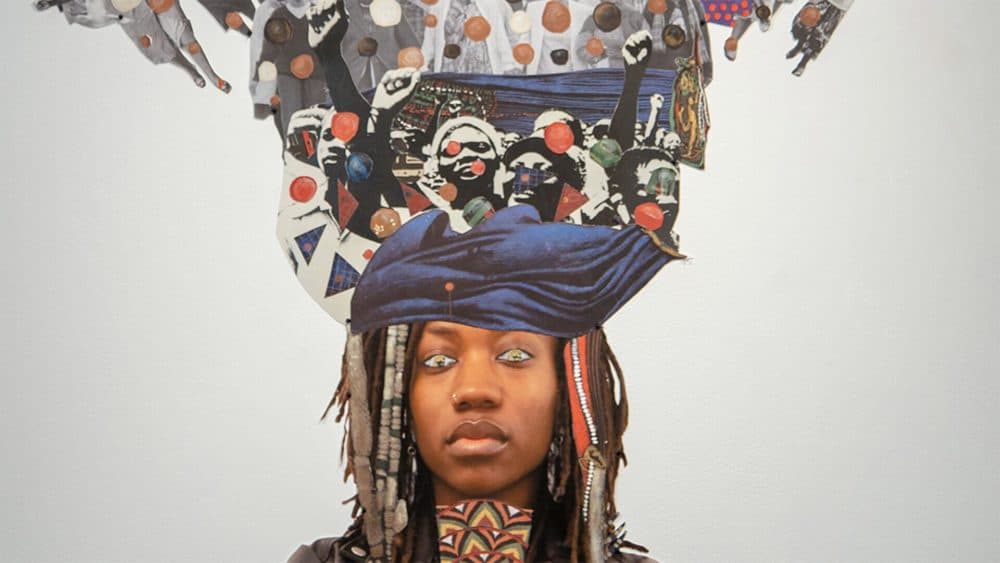Advertisement
Fall Art Guide
15 Art Exhibits Worth Exploring This Fall

We’re entering that cozy time of year when we trade in backyard barbecues and outdoor concerts for indoor restaurants, movie theaters and museums. Normally, it’s all so...hygge, as the Danes would say. This year, however, the snug conviviality of indoor life has been supplanted by anxiety. Will venturing into crowded public venues set off new COVID surges? Time will tell, but until then, we know one thing: when we step indoors this fall, we want it to be worth it.
With that in mind, here’s a look ahead to the most promising offerings of the fall season. The exhibits chosen differ in themes and media. Most of them are at museums and almost all will be running into next year, which gives you plenty of time to catch them should COVID-19 restrictions lead to temporary pauses. What’s on tap in Boston and in surrounding towns is varied enough that almost everyone can find at least one intriguing exhibit. And the bravest among us can catch them all.
'Staying with the Trouble: Paula Wilson + Faith Wilding'
Tufts University Art Galleries
Through Dec. 5
Paula Wilson is an African American mixed media artist who creates work investigating the female identity through the lens of cultural history. Faith Wilding is a Paraguayan artist whose work examines the somatic, psychic and sociopolitical history of the body. Now the two have come together as part of a larger Tufts exhibit featuring 11 artists. Spanning both the Grossman Gallery on the School of the Museum of Fine Arts campus as well as the Aidekman Arts Center in Medford, the exhibition offers strategies for getting through a difficult political and socioeconomic moment. Wilson and Wilding, shown in dialogue at the Grossman Gallery, invite us to look toward nature. We see Wilson’s 2018 video installation “Spread Wild: Pleasures of the Yucca,” which in languidly erotic fashion recreates the pollination of the yucca flower through dance, making us wish for just one night as a yucca moth. A selection of Faith Wilding drawings and paintings on paper and papyrus incorporate the human and natural worlds, mirroring the lustiness of Wilson’s video and helping us to recognize the spiritual in the sensual.
'2021 James and Audrey Foster Prize Exhibition'
ICA Boston
Through Jan. 30
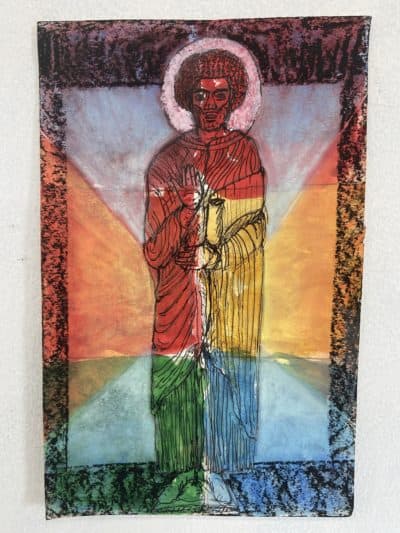
Every couple of years, the ICA celebrates three local artists doing noteworthy work. This year, curator Jeffrey De Blois has chosen Dell Marie Hamilton, Marlon Forrester and Eben Haines for the honor. In the solitary atmosphere of a pandemic, De Blois was interested in showcasing artists who have devoted their art practice to the idea of coming together. Forrester, a multidisciplinary artist in Northeastern University’s African American Master Artist-in-Residency Program, has created five large-scale paintings modeled after figures seen in the Chartres Cathedral, inspired by the legend of flying Africans which has circulated for generations among Blacks in the South. Haines, founder of the Shelter in Place Gallery, a virtual gallery at miniature scale that he initiated during the pandemic, presents “Facades,” which recreates a New England home that has fallen into disrepair. The installation, which includes painting and sculpture, is meant to take on the injustices of a housing system that prioritizes the rights of developers and landlords over tenants. Hamilton, an interdisciplinary artist, writer and curator who works at Harvard’s Hutchins Center for African and African American Research, creates an installation entitled “The End of Susan, The End of Everything,” composed of possessions Hamilton inherited from her friend and mentor Susan Denker, a faculty member at the School of the Museum of Fine Arts, who passed in 2016. The implicit question: how do we make meaning out of what’s left behind after someone dies? [Read more about the exhibit here.]
Advertisement
'Raúl de Nieves: The Treasure House of Memory'
ICA Boston
Through July 24
Raúl de Nieves creates opulent life-size sculptures, encrusted with beads, bangles, bells and sequins. While his work may recall visions of the glam rock costumes of the 1970s, his true influences are the traditional costumes of his native Mexico as well as fashions coming out of drag, ballroom and queer culture. Other inspirations for his work include religious processional garb and the showy costumes of the circus. In this show, de Nieves says he was inspired by a tarot reading in which he was advised to become the master of his house, to plumb his past to find new meaning. While the artist’s works are vibrant, glittering and fun, they speak to more than just surface decoration as he uses visual mythology, folktales and Mexican craft to create magnetically pulsating figures that speak to the transformational possibilities of personal adornment. [Read more about the exhibit here.]
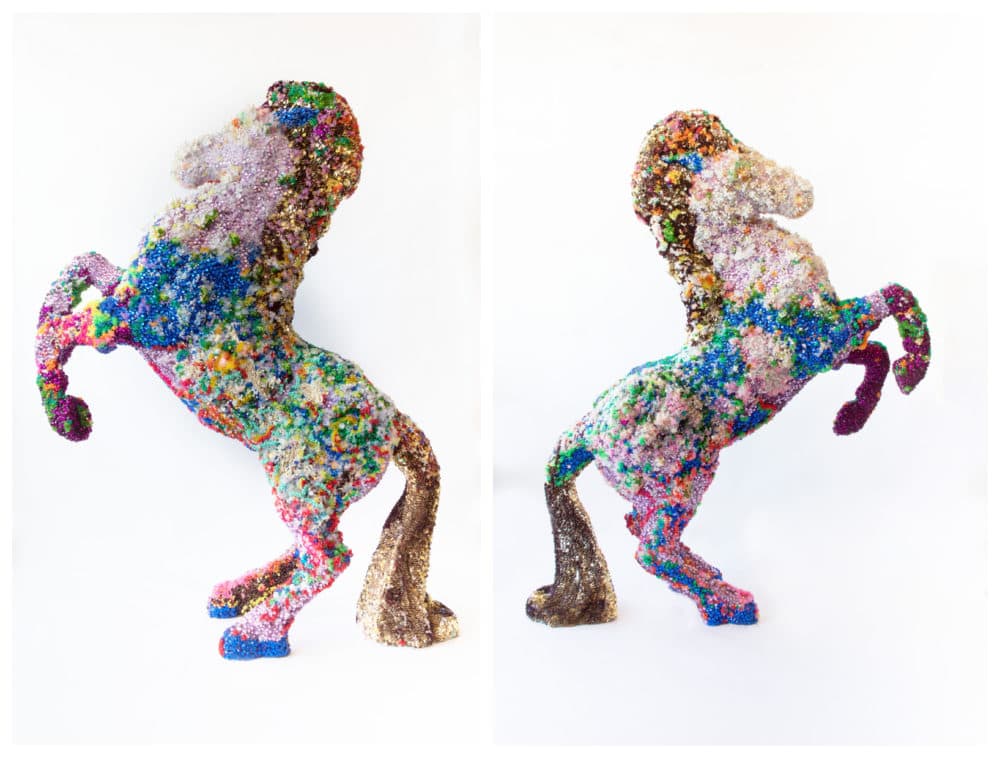
'Zarah Hussain: Breath'
Peabody Essex Museum
Through April 18
If there’s one thing we can appreciate in this pandemic era, it’s the breath. We breathe in. We breathe out. And we’re grateful. Or should be. The words “I can’t breathe” became a slogan in 2020 protesting police brutality against Black men. At the same time, millions of those with COVID sat gasping for air at home. Now, British artist Zarah Hussain explores the idea of breathing in a series of meditative geometric paintings meant to be a symbolic and soothing representation of inhaling and exhaling. Hussain, whose training is in Islamic art, has used her own reflections and experiences and combined them with the personal stories of others who have either experienced suffocation and its frantic fear, or alternatively, luxuriated in the healing power of the unencumbered breath. The paintings, made while Hussain was under a COVID-19 lockdown in London, come at just the right moment. Combined with animation and a soundscape mimicking the 5.5 seconds of the perfect breath, they invite visitors to slow down, relax and just...breathe.
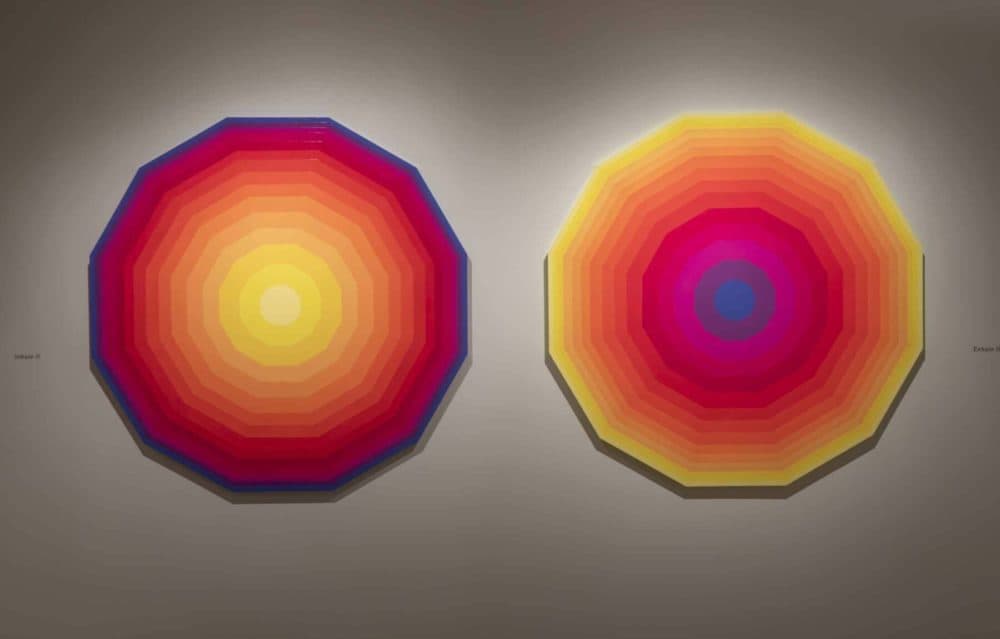
'David Schnuckel: Meaningful Gibberish'
Fuller Craft Museum
Through Feb. 20
Artist David Schnuckel is consumed by questions around glass. What do “mastery,” “skill” and “craftsmanship” mean when it comes to glassmaking? Can a glassmaker be both skillful and experimental at the same time? Using glass, photography, writing, drawing and video, “Meaningful Gibberish” is meant to smash through glass barriers. Schnuckel’s ultimate question: How can an artist break something down as thoughtfully and skillfully as it was once created?
'Abelardo Morell: Projecting Italy'
Fitchburg Art Museum
Through Jan. 2
Although Abelardo Morell has done a range of photography ranging from wooden blocks echoing Georges Braque cubism to ghostly and wistful images of draped cloth. In this exhibit, the Cuban-born, Boston-based photographer turns his lens on Italy. But these are not conventionally beautiful photographs of Roman monuments or Tuscan rolling hills. Morell makes use of the camera obscura technique. Held in honor of the 20th anniversary of the Center for Italian Culture at Fitchburg State University, in this exhibit, the world outside is one we have seen in postcards and travel shows, but the world is upside down and boasts all the jarring complexities of an Escher drawing. Morell’s unique take on Italian landscape and architecture gives us a new appreciation of the old and makes us wonder what inventive thing he’ll do next. [Read more about this exhibit here.]
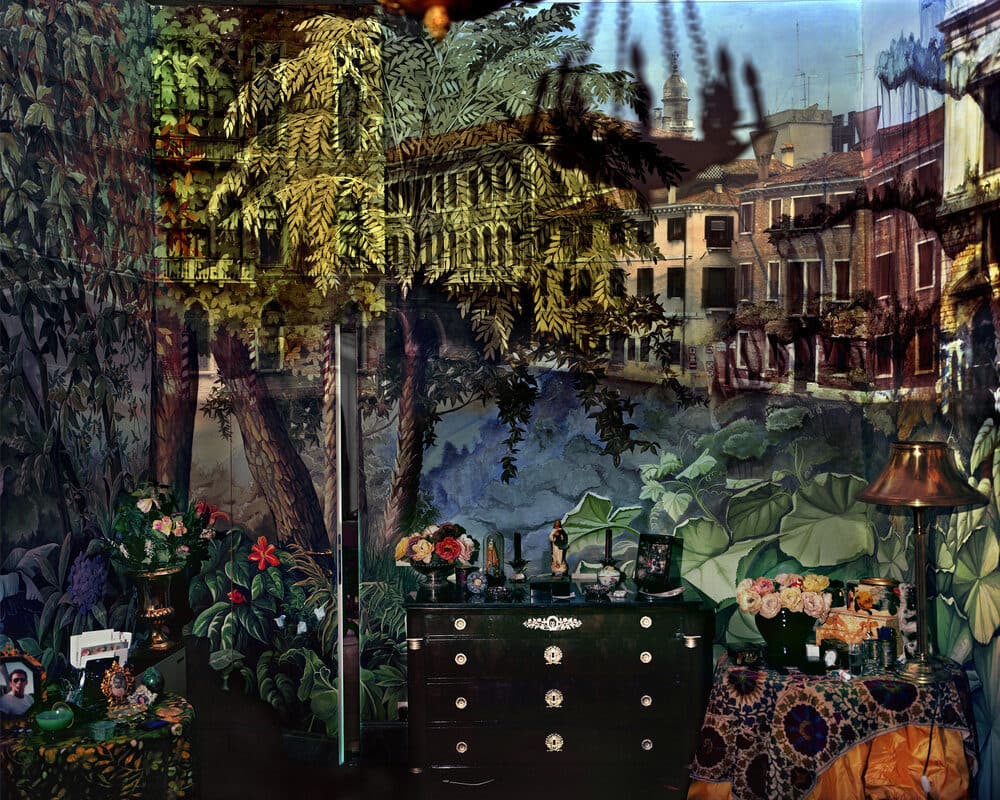
'Joyride: Cars in American Art'
Fitchburg Art Museum
Through Jan. 9
If Morell’s inventive photography leaves you wanting more, the Fitchburg Art Museum offers cars. Not actual cars, that is, but representations of the automobile in art. “Joyride” offers a diverse group of American artists who take on the car as subject matter, examining not only how the car has changed our lives, but the planet. Work from the personal collection of Terry and Eva Herndon, offers a wistful take on the good old days when we could tool around in our belching machines, unaware of all the damage we were doing to the environment. Back then, cars were powerful symbols of freedom and adventure. Now, looking at paintings featuring cars has the same melancholy nostalgia of looking at an old family album of past adventures, some joyful, others ill-advised, that are never to be again.
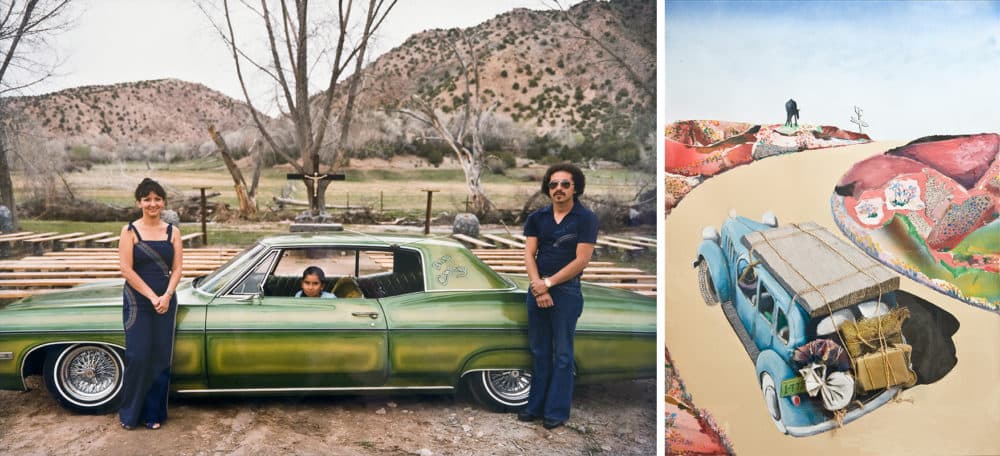
'Uncovering the Human Condition'
Fitchburg Art Museum
Through Jan. 9
If you’ve had enough of cars in your life, the museum also offers an exhibit dedicated to humans. Paintings, works on paper and sculpture from the private collection of Arthur Goldberg, all include the human figure, channeling questions about being, experience and perception. And if you’ve had it with humans, too, we suggest backtracking to the Morell exhibit.
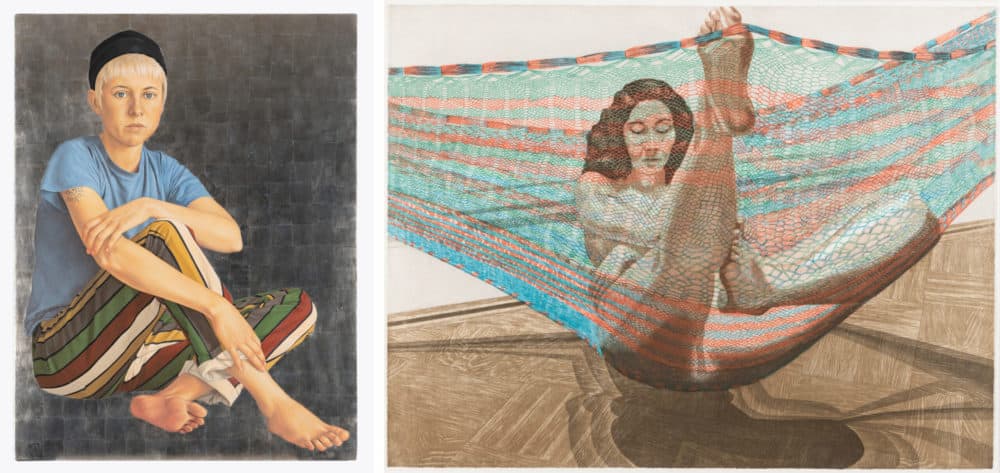
Josef Albers 'Formulation: Articulation'
Boston University Art Galleries, Stone Gallery
Oct. 1-Dec. 12
Josef Albers was an iconic Bauhaus artist who believed that an artist must master the fundamental disciplines before setting off on the path of individuality. He taught preliminary design and color in the Bauhaus school, ultimately bringing his research and teaching methods to Black Mountain College and Yale University. His book, “Formulation: Articulation,” was published in 1972 and was Albers’ compilation of the visual exercises of his art teaching, an attempt to precisely render the experience of color in the way Albers understood it. In his own words: “When you really understand that each color is changed by a changed environment, you eventually find that you have learned about life as well as about color.”
'Steve Locke: Homage to the Auction Block'
Boston University Art Galleries, Stone Gallery
Oct. 1-Oct. 27
Steve Locke also explores ideas of color, but in a wholly different context. Using modernist forms and color theory, Locke explores questions around race, comparing the modernist form of the block to the slave auction block. “The use of the ‘auction block’ motif literally organizes these modernist relations around the central symbol of chattel slavery in the Americas,” Locke has said of his work. “The work reframes the work of modernism around the shape that made it possible.” Running concurrently with Josef Albers’ “Formulation: Articulation,” Locke’s series both celebrates and subverts Albers’ legendary “Homage to the Square” series, providing an entirely new context in which to consider iconic and familiar works.
'Fabric of a Nation: American Quilt Stories'
Museum of Fine Arts Boston
Oct. 10-Jan. 17
When you think quilts, you envision mild-mannered grannies, gathered in a farmhouse surrounded by gingham and chintz fabric remnants. But in the MFA’s new exhibit, we see that quilting has woven together a much wider population of practitioners. Men quilt. Urban hipsters quilt. So do Black, Latinx, Indigenous, Asian and LGBTQ+ Americans. Among other works, we see Bisa Butler’s elaborate quilt based on an 1899 photograph of the Morris Brown College baseball team as well as Carla Hemlock’s quilt featuring the figures and names of 48 First Nations and Indigenous groups that still survive today. We may have notions of quilting as something quaintly disconnected from the discourse of the day, but with “Fabric of a Nation,” we are reminded that the quilting tradition is not only relevant in our times but also a connection to our collective past.
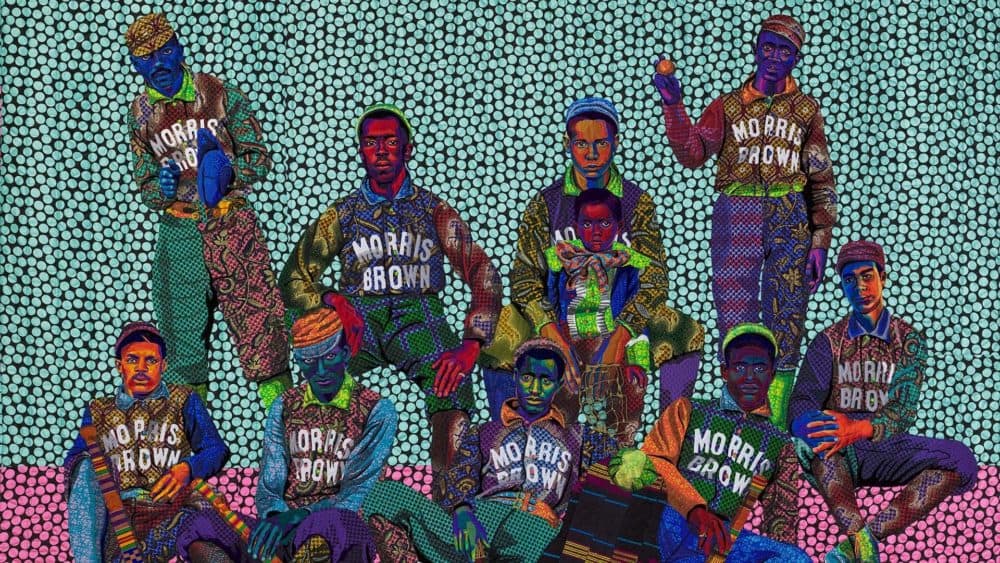
'Jeffrey Gibson: Infinite Indigenous Queer Love'
deCordova Sculpture Park and Museum
Oct. 15-March 13
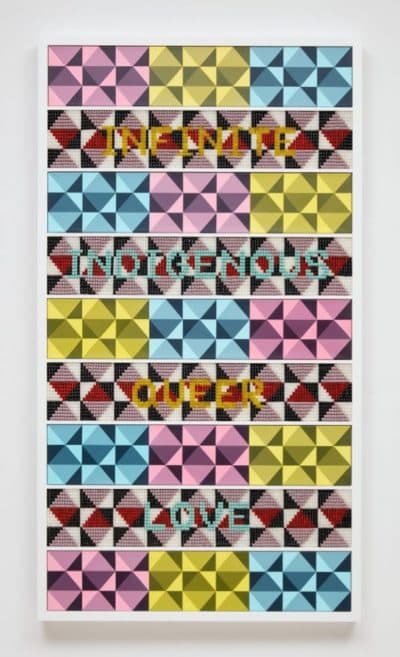
In “Infinite Indigenous Queer Love,” Jeffrey Gibson debuts a series of towering hanging fringe cube sculptures in radiant colors that will “transform the museum’s central gallery into a darkened immersive space of color and texture unlike any before shown in this space,” according to the deCordova’s website. The fringe references a common element in indigenous dance regalia and also serves as a cheeky reference to a position outside the mainstream. The huge volumetric forms are our entrée into “queer” abstraction melding hard-edge shapes and fluid materiality. In this exhibit, a series of collages, sculptures and films give us a window into what it’s like to live on the fringe in more than just one way.
'Radical Return'
Boston University Art Galleries, Stone Gallery
Nov. 8-Dec. 12
Drawing its inspiration from the Chinese character “hui,” which means to return or circle back, the exhibit considers why a person might return to something, someone or somewhere. Featuring Chinese and Chinese American designers, “Radical Return” asks designers to explore what paths they may once have traversed to which they return. Curated by assistant professor Mary Yang and Zhongkai Li, this group exhibit will be on view simultaneously at Boston University Art Galleries and IS A GALLERY in Shanghai, China.
Deana Lawson
ICA Boston
Nov. 4-Feb. 27
For more than 15 years, photographer Deana Lawson has created work challenging conventional representations of Black identity. In this exhibit, we see her large-format color photographs drawing on a range of influences from the family album to studio portraiture to staged tableaux to documentary pictures. Lawson’s meticulous photographs center around members of her own community. In a press release, Lawson says the images are “a mirror of everyday life, but also a projection of what I want to happen. It’s about setting a different standard of values and saying that everyday Black lives, everyday experiences, are beautiful, and powerful, and intelligent.”

'Helina Metaferia: Generations'
Museum of Fine Arts Boston
Nov. 6-April 3
In this exhibit, artist Helina Metaferia asked women of color, particularly activists, to share their “everyday revolutions.” How do they navigate through a world of constant barriers? The answer to this question comes in different media that includes collage, video and installation. “Generations” refers to how inherited trauma can inform present day experiences as well as how the legacies of our elders and the kinship of our contemporaries inform and shape our worlds. Metaferia attempts to draw the throughline, offering hope and sustenance in a time when many have lost hope.
